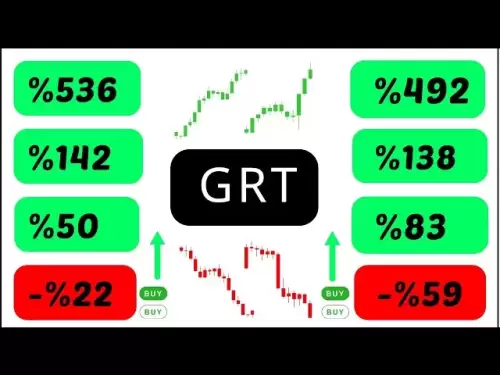-
 Bitcoin
Bitcoin $107,467.9126
1.26% -
 Ethereum
Ethereum $2,447.5288
-0.12% -
 Tether USDt
Tether USDt $1.0005
0.00% -
 XRP
XRP $2.1921
0.13% -
 BNB
BNB $647.2897
0.50% -
 Solana
Solana $144.8627
-0.37% -
 USDC
USDC $0.9996
-0.03% -
 TRON
TRON $0.2732
0.10% -
 Dogecoin
Dogecoin $0.1652
-0.18% -
 Cardano
Cardano $0.5700
-2.87% -
 Hyperliquid
Hyperliquid $37.0274
-1.81% -
 Bitcoin Cash
Bitcoin Cash $484.6957
0.19% -
 Sui
Sui $2.7354
-2.19% -
 Chainlink
Chainlink $13.1727
-1.49% -
 UNUS SED LEO
UNUS SED LEO $8.9978
-0.04% -
 Stellar
Stellar $0.2421
-2.33% -
 Avalanche
Avalanche $17.5633
-3.51% -
 Toncoin
Toncoin $2.8476
-1.94% -
 Shiba Inu
Shiba Inu $0.0...01166
-0.56% -
 Litecoin
Litecoin $85.1071
0.09% -
 Hedera
Hedera $0.1502
-2.96% -
 Monero
Monero $310.2774
-1.64% -
 Dai
Dai $0.9999
-0.01% -
 Polkadot
Polkadot $3.3584
-1.88% -
 Ethena USDe
Ethena USDe $1.0003
-0.04% -
 Bitget Token
Bitget Token $4.4443
2.90% -
 Pi
Pi $0.6242
14.04% -
 Uniswap
Uniswap $6.9774
-2.86% -
 Pepe
Pepe $0.0...09535
-5.05% -
 Aave
Aave $256.7574
-3.35%
When breaking through the previous high, the volume hits a 3-month high but the volume shrinks by half the next day?
A surge in volume during a crypto breakout signals strength, but a sharp drop the next day may indicate profit-taking or hesitation, making it crucial to monitor price action and confirm the trend before trading.
Jun 26, 2025 at 02:07 am
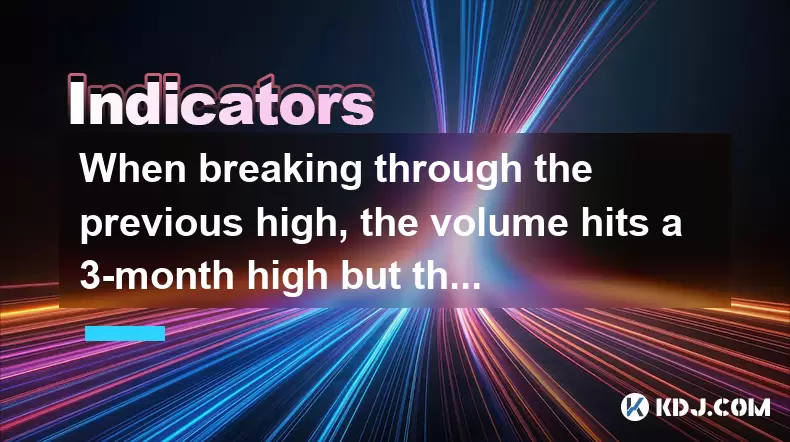
Understanding Volume Behavior During Price Breakouts
When a cryptocurrency breaks through its previous high, it is often seen as a bullish signal, suggesting that the asset might continue to rise. However, when this breakout coincides with a spike in volume — specifically, hitting a 3-month high — followed by a sharp drop where volume shrinks to half the next day, traders may find themselves puzzled.
This pattern raises several questions: Why did the market react so strongly on the first day? What does the sudden drop in volume signify? Is this a continuation or reversal pattern?
Volume is a key indicator of market sentiment, and understanding its behavior during breakouts can help traders make informed decisions.
The Significance of a 3-Month High in Volume
A sudden surge in volume to a 3-month high indicates intense buying pressure or possibly a large influx of new capital into the asset. This could be triggered by positive news, improved fundamentals, or even broader market trends pushing the price upward.
Such a surge typically signals that a significant number of traders are entering the market, which can lead to further upward movement if the momentum continues. In technical analysis, increased volume accompanying a breakout adds credibility to the move.
However, the fact that volume drops significantly the next day introduces an element of uncertainty. High volume without follow-through may indicate exhaustion rather than strength.
Why Volume Drops After a Spike
The drop in volume after a breakout day can be attributed to multiple factors:
- Profit-taking: Traders who entered before the breakout may take profits immediately after the price surge, reducing trading activity the next day.
- Market hesitation: A lack of immediate follow-through may cause some traders to pause, waiting for confirmation before placing new trades.
- Liquidity absorption: If large orders were executed during the breakout, they may have absorbed available liquidity, temporarily reducing trading volume until new buyers step in.
This dynamic suggests that while the initial breakout was strong, the market may not yet be convinced about the sustainability of the move. It’s crucial to observe whether the price holds above the previous high despite lower volume.
Analyzing Price Action Post-Breakout
Even though volume dropped the next day, the price action should be closely monitored to determine whether the breakout is valid. Here's how to assess it:
- Check for higher lows: If the price remains above the breakout level and forms higher lows, it may suggest that the uptrend is still intact.
- Watch for rejection candles: A long upper wick or bearish candlestick pattern after the breakout may indicate selling pressure.
- Observe consolidation: Sometimes, after a strong rally, the price consolidates. This doesn’t necessarily mean the trend has ended but could indicate a pause before another move.
Traders should avoid making hasty decisions based solely on volume changes. Combining volume analysis with price patterns and support/resistance levels provides a more comprehensive view.
How Institutional Activity Influences Volume Patterns
Institutional investors and large whales often execute their trades in ways that can distort short-term volume readings. For example, a whale accumulating a large position may place massive buy orders in one session, causing a spike in volume. The following day, once the order is filled, there may be little to no trading activity until the next phase of accumulation begins.
This kind of behavior is common in low-cap altcoins but can also occur in major cryptocurrencies like Bitcoin or Ethereum under certain conditions. Recognizing institutional footprints helps distinguish between genuine breakouts and manipulated moves.
To detect such behavior, traders can use tools like blockchain explorers, order book depth charts, or volume profile indicators to see where most of the volume came from.
Practical Steps for Responding to This Scenario
If you encounter this situation while trading, here’s a detailed guide on how to respond:
- Wait for confirmation: Don’t enter a trade immediately after the breakout unless you're confident in the strength of the move. Wait for at least two more candles to form before making a decision.
- Use moving averages: Overlay short-term and medium-term moving averages (like the 9-day and 21-day EMA) to see if the price is holding above them, which could confirm strength.
- Monitor order flow: Use platforms that show real-time order books or whale alerts to track abnormal activities that may influence price and volume.
- Set tight stop-losses: If you decide to trade the breakout, always protect your position with a stop-loss just below the breakout level to limit downside risk.
- Avoid overtrading: A single volume spike shouldn’t dictate your entire strategy. Always consider the broader context of the market and the asset’s fundamentals.
By taking these steps, traders can better manage their exposure and avoid getting caught off guard by misleading volume spikes.
Frequently Asked Questions
Q: Can a breakout still be valid if volume drops the next day?
Yes, a breakout can still be valid even if volume drops afterward. What matters most is whether the price maintains its position above the previous high. Volume is a supporting indicator, not the sole determinant of a successful breakout.
Q: How can I differentiate between a healthy pullback and a failed breakout?
Look for signs of continued demand, such as higher lows, bullish candlestick patterns, and volume returning on up days. Also, check if key moving averages are still supporting the trend.
Q: Should I sell my holdings if volume drops after a breakout?
Not necessarily. If the price hasn't reversed and key support levels are intact, holding through the consolidation phase may be appropriate. Evaluate your entry point and risk tolerance before deciding.
Q: Are volume spikes always reliable signals in crypto markets?
No, volume spikes can sometimes be misleading, especially in low-liquidity or thinly traded assets. Cross-check with other indicators and look for consistent patterns across timeframes to validate the signal.
Disclaimer:info@kdj.com
The information provided is not trading advice. kdj.com does not assume any responsibility for any investments made based on the information provided in this article. Cryptocurrencies are highly volatile and it is highly recommended that you invest with caution after thorough research!
If you believe that the content used on this website infringes your copyright, please contact us immediately (info@kdj.com) and we will delete it promptly.
- Bitcoin's Market Dominance: A Virtual Asset Overview in '25
- 2025-06-26 12:25:13
- Ministry of Finance, Silver Coin, Golden Year: A Collector's Gem
- 2025-06-26 12:25:13
- XRP Price Prediction: June 26th - Breakout Incoming?
- 2025-06-26 12:50:12
- Qubetics, Bitcoin, Aptos: Navigating the Crypto Landscape in '25
- 2025-06-26 12:31:57
- Meme Coins, Crypto Influencers, and Investment: Riding the Wave in 2025
- 2025-06-26 10:25:13
- NoviqTech, HYDI, and Carbon Credits: A Partnership Driving Sustainable Solutions
- 2025-06-26 10:25:13
Related knowledge
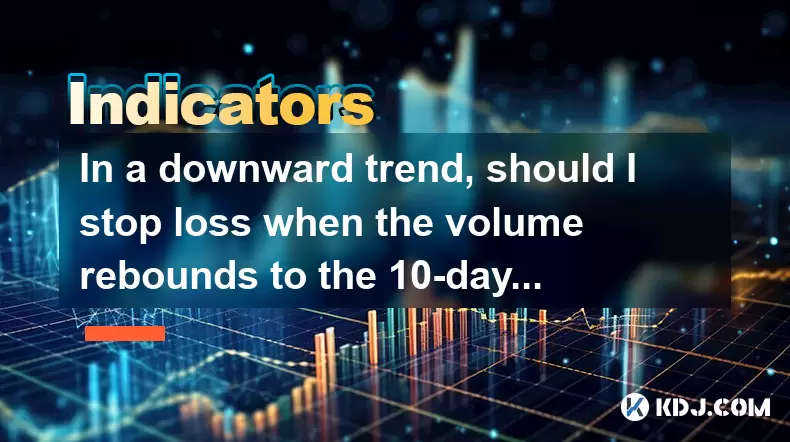
In a downward trend, should I stop loss when the volume rebounds to the 10-day line?
Jun 26,2025 at 11:43am
Understanding the 10-Day Volume Line in a Downward TrendIn cryptocurrency trading, volume is one of the most critical indicators for confirming price movements. The 10-day volume line refers to the average volume over the last 10 days and serves as a benchmark for traders to assess whether current volume levels are unusually high or low. When prices are...
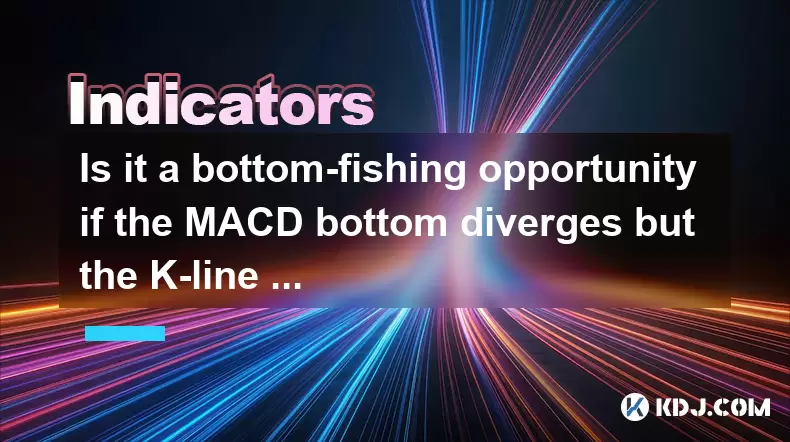
Is it a bottom-fishing opportunity if the MACD bottom diverges but the K-line is still falling?
Jun 26,2025 at 12:35pm
Understanding MACD Bottom Divergence in Cryptocurrency TradingIn cryptocurrency trading, MACD (Moving Average Convergence Divergence) bottom divergence is a technical signal that often suggests a potential reversal from a downtrend to an uptrend. This occurs when the price continues to make lower lows, but the MACD indicator forms higher lows. This disc...
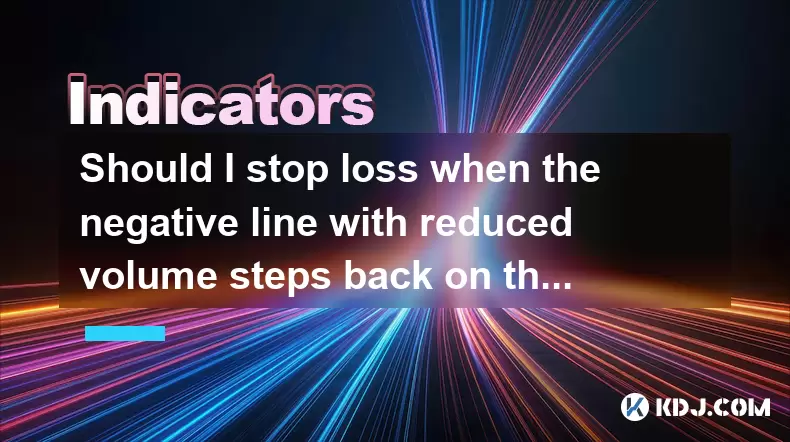
Should I stop loss when the negative line with reduced volume steps back on the 10-day line?
Jun 26,2025 at 05:42am
Understanding the 10-Day Moving Average in Cryptocurrency TradingIn cryptocurrency trading, the 10-day moving average is a short-term technical indicator used by traders to assess price momentum and potential reversals. It represents the average closing price of an asset over the last 10 days and helps smooth out price volatility. When prices approach o...
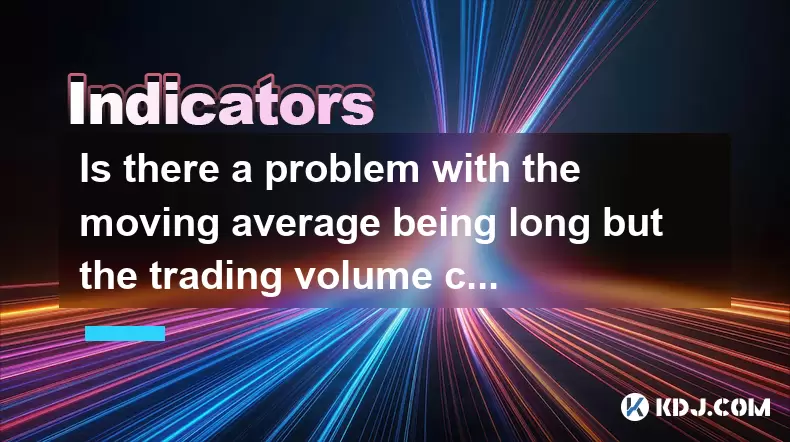
Is there a problem with the moving average being long but the trading volume continues to decline?
Jun 26,2025 at 02:42am
Understanding the Concept of Moving Averages in Cryptocurrency TradingIn cryptocurrency trading, moving averages are one of the most commonly used technical indicators. They help traders identify trends by smoothing out price data over a specific period. When the moving average is described as 'long,' it typically refers to longer timeframes such as the...
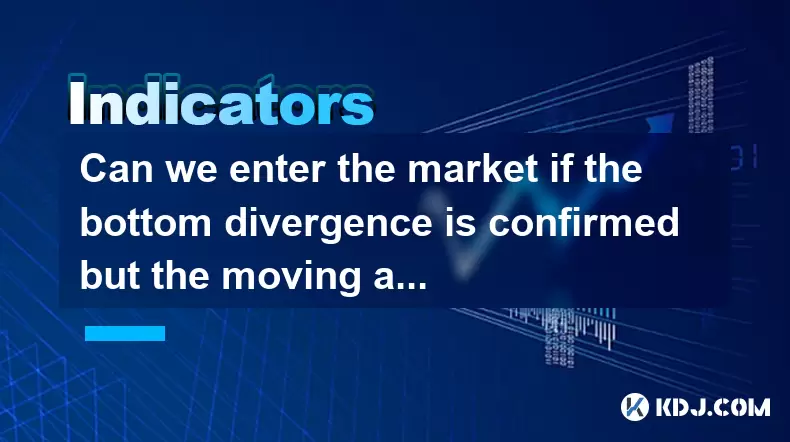
Can we enter the market if the bottom divergence is confirmed but the moving average has not turned?
Jun 26,2025 at 10:08am
Understanding Bottom Divergence in Cryptocurrency TradingIn the world of cryptocurrency trading, technical analysis plays a pivotal role in identifying potential market reversals. One such indicator is bottom divergence, which often signals that an ongoing downtrend may be losing momentum and could reverse into an uptrend. Bottom divergence occurs when ...
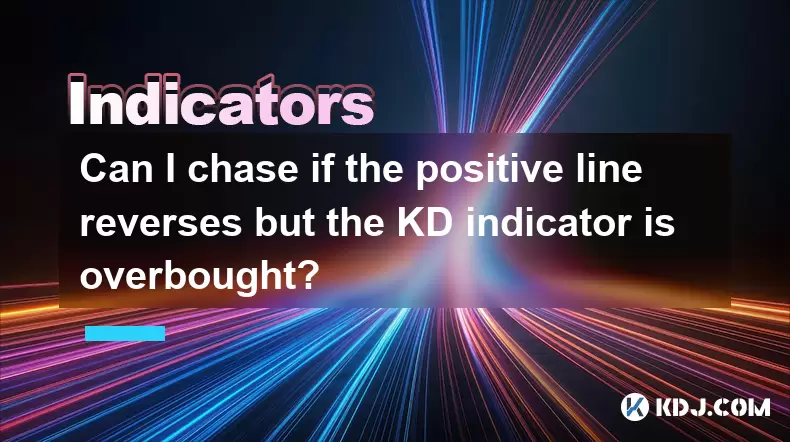
Can I chase if the positive line reverses but the KD indicator is overbought?
Jun 26,2025 at 09:29am
Understanding the Positive Line ReversalIn cryptocurrency trading, a positive line reversal typically refers to a scenario where an upward trend suddenly changes direction. This is often interpreted as a sign of potential weakness in the market sentiment. Traders use candlestick patterns and volume indicators to spot such reversals. A key point to note ...

In a downward trend, should I stop loss when the volume rebounds to the 10-day line?
Jun 26,2025 at 11:43am
Understanding the 10-Day Volume Line in a Downward TrendIn cryptocurrency trading, volume is one of the most critical indicators for confirming price movements. The 10-day volume line refers to the average volume over the last 10 days and serves as a benchmark for traders to assess whether current volume levels are unusually high or low. When prices are...

Is it a bottom-fishing opportunity if the MACD bottom diverges but the K-line is still falling?
Jun 26,2025 at 12:35pm
Understanding MACD Bottom Divergence in Cryptocurrency TradingIn cryptocurrency trading, MACD (Moving Average Convergence Divergence) bottom divergence is a technical signal that often suggests a potential reversal from a downtrend to an uptrend. This occurs when the price continues to make lower lows, but the MACD indicator forms higher lows. This disc...

Should I stop loss when the negative line with reduced volume steps back on the 10-day line?
Jun 26,2025 at 05:42am
Understanding the 10-Day Moving Average in Cryptocurrency TradingIn cryptocurrency trading, the 10-day moving average is a short-term technical indicator used by traders to assess price momentum and potential reversals. It represents the average closing price of an asset over the last 10 days and helps smooth out price volatility. When prices approach o...

Is there a problem with the moving average being long but the trading volume continues to decline?
Jun 26,2025 at 02:42am
Understanding the Concept of Moving Averages in Cryptocurrency TradingIn cryptocurrency trading, moving averages are one of the most commonly used technical indicators. They help traders identify trends by smoothing out price data over a specific period. When the moving average is described as 'long,' it typically refers to longer timeframes such as the...

Can we enter the market if the bottom divergence is confirmed but the moving average has not turned?
Jun 26,2025 at 10:08am
Understanding Bottom Divergence in Cryptocurrency TradingIn the world of cryptocurrency trading, technical analysis plays a pivotal role in identifying potential market reversals. One such indicator is bottom divergence, which often signals that an ongoing downtrend may be losing momentum and could reverse into an uptrend. Bottom divergence occurs when ...

Can I chase if the positive line reverses but the KD indicator is overbought?
Jun 26,2025 at 09:29am
Understanding the Positive Line ReversalIn cryptocurrency trading, a positive line reversal typically refers to a scenario where an upward trend suddenly changes direction. This is often interpreted as a sign of potential weakness in the market sentiment. Traders use candlestick patterns and volume indicators to spot such reversals. A key point to note ...
See all articles























